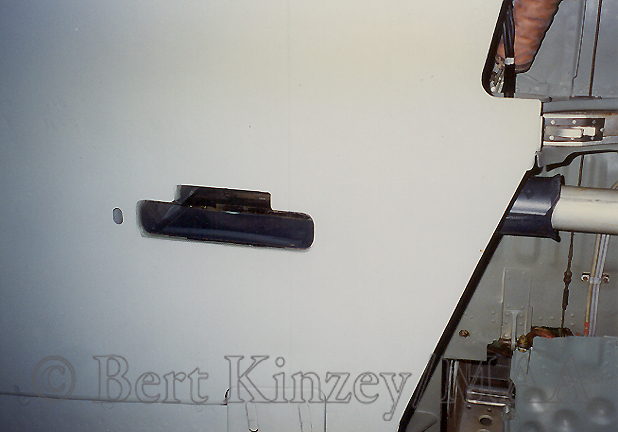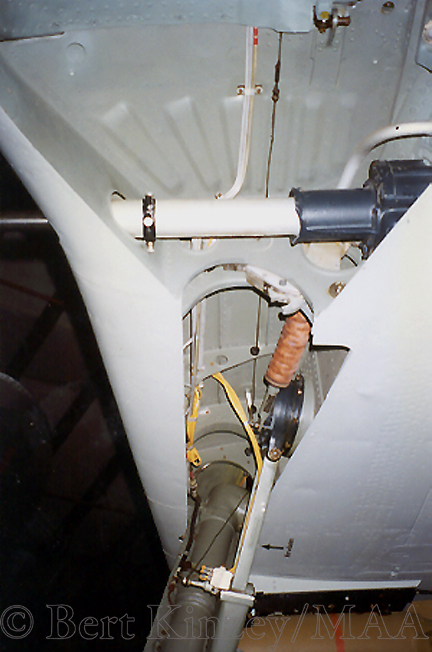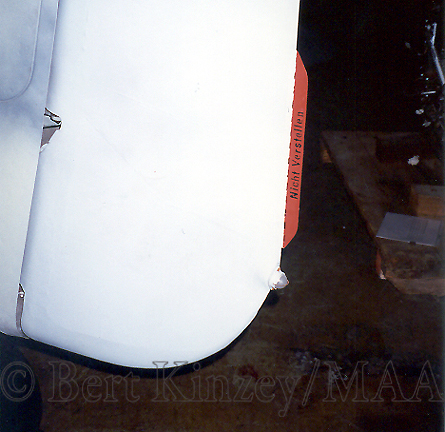Along with the Messerschmitt Bf 109, the Focke-Wulf Fw 190 was one of Germany’s two best and well known piston engine fighters of World War II. Designed by Kurt Tank, the Fw 190 was produced in a large number of variants powered by both radial and in-line engines.
The contract for the Fw 190 was issued to Focke-Wulf in the fall of 1937, and designs with air-cooled radial and liquid-cooled inline engines were submitted. In mid-1938, Focke-Wulf was given the approval to proceed with the radial engine design, and the first prototype, designated Fw 190V1, made its initial flight a year later on June 1, 1939. It featured a large ducted spinner that was intended to increase the streamlining of the nose, but it also severely restricted the airflow past the cylinders of the BMW 139 engine. In an attempt to compensate for this, a fan was placed inside the spinner to bring air in and cool the engine. This never proved to be satisfactory in reducing engine heat to an acceptable level, so a more conventional spinner was eventually fitted to the propeller hub. A second prototype, the Fw 190V2, soon joined the test program. It was armed with two 13-mm MG 131 and two 7.9-mm MG 17 machine guns.
A decision was made to replace the BMW 139 engine with the BMW 801 radial engine. A redesign of the airframe was necessary to accommodate this change, and the first prototypes with these changes were the Fw 190V5k and Fw 190V5g. These two prototypes also had the cockpit moved further aft in the fuselage. These were followed by the Fw 190V6, which was essentially the same as the Fw 190V5g.
The first production version was the Fw 190A, and it would be built in large numbers and in a considerable number of sub-variants and sub-sub-variants. The differences in equipment, features, and missions of these are beyond the scope of this historical summary, but the Fw 190A became one of Germany’s most important fighters during World War II and served as the basis for the subsequent Fw 190F and Fw 190G variants. Fw 190As were powered by BMW 801 radial engines which had fourteen cylinders arranged in two rows. In its many sub-variants, the Fw 190A proved to be very versatile. It was effective as a standard fighter, fighter-bomber, night fighter when fitted with special radar, and even as a torpedo bomber.
After prototypes for Fw 190B and Fw-190C were built, but never put into production, the Fw 190D became the next variant of the fighter to be produced in large numbers. The “Dora” was also the first production version fitted with a liquid-cooled, inline engine, making the nose much longer than that of the Fw 190A. As a result, Fw 190s with the inline engines were known as “long nose” variants. The engine used for the Fw 190D was a Junkers Jumo 213. As with the Fw 190A, numerous sub-variants of the Fw 190D were produced, each of which was optimized to fill a specific role. Many Luftwaffe pilots and military aviation experts considered the Fw 190D to be the best propeller-driven fighter flown by Germany during World War II.
The Fw 190E was a proposed reconnaissance fighter, but it was never built. The next version to go into production was the Fw 190F, but these aircraft were actually rebuilt Fw 190As optimized for the ground attack mission. These fighter-bombers had additional armor to protect the pilot and critical areas of the aircraft from ground fire, and this added weight was offset in part by removing the two outboard wing cannon found in the Fw 190A. Racks were installed to carry bombs on the centerline station and four wing stations. All Fw 190Fs were intended for ground attack duties, but numerous sub-variants were produced with different armament capabilities.
The Fw 190G was a dedicated, long range fighter-bomber, and again, this variant was based on the Fw 190A airframe. Both day and night fighter-bomber sub-variants of the Fw 190G were produced. To lighten the aircraft, the fuselage machine guns and outer wing cannon were removed, leaving only the two inboard wing cannon as defensive armament. A fuselage rack was fitted to the centerline to carry the bomb load, and, depending on the sub-variant, various provisions for carrying external fuel were fitted under the wings. In the case of the Fw 190G-3/R1 and the Fw 190G-8, under-wing racks could be installed to carry 50-kg bombs as well as external fuel tanks.
The most unusual derivative of the Fw 190 design was the development given the Ta 152 designation, the Ta being derived from the designer, Kurt Tank. The Ta 152 was based on the highly successful Fw 190D with its inline Jumo 213 engine. Initially, there were very few differences between the Ta 152A and the previous Fw 190D, with one notable change being that the flaps and landing gear were operated hydraulically instead of electrically. The Fw 190Ds Jumo 213A was replaced by a Jumo 213C which allowed for the installation of an engine mounted MK 108 30-mm cannon to supplement the two 20mm MG 151s and two 13-mm MG 131s.
The Ta 152B differed from the initial Ta 152A prototype in having the Jumo 213D-1 engine, but this powerplant also had provisions for mounting the MK 108 cannon. Nitrous Oxide could be injected into the 213D-1’s supercharger to boost the speed of the fighter to 443 miles per hour at 44,300 feet. But as with the Ta 152A, the Ta 152B was never placed in production.
The Ta 152C became the first variant to enter production. It was fitted with a longer Daimler-Benz DB 603 engine, and to compensate for the longer nose, the aft fuselage was also lengthened. The much longer fuselage also required a larger vertical tail to provide the necessary stability for the aircraft. The wings were also modified to provide extra fuel capacity, and the span was increased from 34 feet, 5 inches, as used on the Ta 152A and Ta 152B, to 36 feet, 1 inch. Armament included four MG 151 20-mm cannon and one MK 103 30-mm cannon.
The DB 603LA engine, fitted to the Ta 152C-1, could be injected with methanol-water to increase take-off power to 2,300 horsepower. The Ta 152C-3 was powered by the DB 603L, which also had the methanol-water boost of the DB 603LA, but it also had the Nitrous Oxide boost of the 213D-1 used in the Ta 152B prototype. The Ta 152C-3 also differed from the C-1 in having a MK 103 cannon instead of the MK 108.
The Ta 152E was a photo-reconnaissance variant that was powered by the Jumo 213E engine. Although production began on this version, very few were completed by the end of the war.



























































